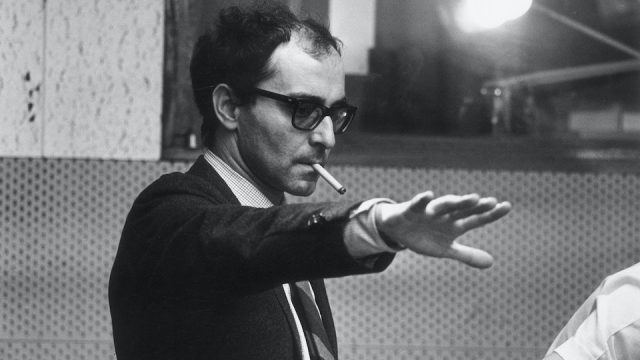This Week We’ve Run All the Way Here to Tell You About:
- Husbands and Wives
- Witness
- Smith
- The Mind of Godard
Thanks to Devourer Skulking Crockford for contributing this week. Send articles throughout the next week to ploughmanplods [at] gmail, post articles from the past week below for discussion, and Have a Happy Friday!
At Vulture, Bilge Elbiri argues that everyone has their own Godard:
Is there another filmmaker over whom so many would claim ownership, each in their own distinct manner? The immensity and variety of his work, with its ceaseless contradictions, ensure that. There is Godard the romantic and Godard the revolutionary, Godard the cinephile and Godard the cynic, and a million other iterations. All of these identities are connected, of course — you can’t deconstruct the moving image with his level of obsessiveness and thoroughness if you don’t also love the moving image — but each is its own journey, its own point of communion with God.
Beloved Soluter C.M. Crockford goes long on the violence and pacifism of Witness at his substack:
Book and Rachel’s romance is how the script develops into something rather profound: an exploration of two different ways of Being, both how they naturally conflict with each other, and how people can bridge these gaps in shared experience through humanity and collectivism. A stunning climax eventually depicts how the Amish’s pacifism and Book’s retribution can each be effective. The result is a deeply moral and eventually non-violent reckoning that is utterly unlike any Hollywood “good vs. evil” ending filmed before or since.
Kevin Smith talks to Brian Davids at The Hollywood Reporter about reuniting with Ben Affleck, the rat shot at the end of The Departed, and how a massive heart attack led to the version of Clerks III we have today:
But being on a set with Ben Affleck is like being on a set with Brian, Jeff and Jason Mewes. These are the co-architects of my entire career and my dreams. A person that dreams alone and writes a script, that ain’t making a movie; it takes a village. And these were the people that made that movie for me. And so whenever I get to work with them again, even if it’s in a small piece, it’s like, “Yes, we’re still on mission. This is exactly what it was like when I was in my early twenties, and even though I’m 52 now, I’m still the same filmmaker at heart.” That’s what it feels like.
At Crooked Marquee, Craig J. Clark talks about revisiting Husbands and Wives after the controversies of Woody Allen that overshadowed its release have only grown:
What got lost in the fray was one of Allen’s most challenging and stylistically daring films, made in quasi-documentary form with handheld camerawork, jump cuts (sometimes in the middle of sentences), and even some zooms, as well as interviews with the actors in character. Those looking for signs of art imitating life (“a voyeur’s treasure hunt,” per Jami Bernard in the New York Post) had to ignore that Husbands and Wives had been scripted and filmed long before Allen’s breakup with Farrow, and Gabe and Judy Roth, the married couple they play, are conspicuously childless. Even so, the moments where Judy asks Gabe, “Do you ever hide things from me?” and “Do you think we’d ever break up?” did gain extra layers of meaning (as evidenced by the way clips from the film are deployed in Allen v. Farrow).
And for Film Comment, Dash Shaw talks about the retro viewpoint on comics and cartooning that informs indie comedy Funny Pages:
This movie is so 1990s that Robert’s troubled mentor, Wallace (Matthew Maher), is an Image Comics artist who touts his “craft” over the “soul” of the teen’s goofy cartoons (drawn by real-life cartoonist Johnny Ryan). This conflict recalls the famous (among cartoonists) debate set off by James Kochalka’s letter to the editor in a 1996 issue of The Comics Journal, titled “Craft is the Enemy,” which posited that craft stifled creativity. Others (including Frank surrealist Jim Woodring) pushed back, asserting that craft was a means of unlocking the “soul” of the artist. Rather than recognize the “soul” in the weird Mannerist figuration of Image Comics (currently celebrated by alternative cartoonists on the Cartoonist Kayfabe YouTube channel), not to mention the obviously extraordinary “craft” of Johnny Ryan’s tight open shapes and rigorous remixing of lowbrow humor, Funny Pages celebrates Kochalka’s contrarian stance without any characterizations that might update its decades-old mold.


